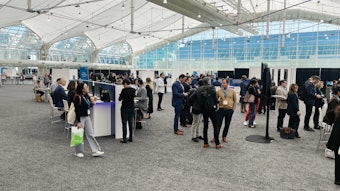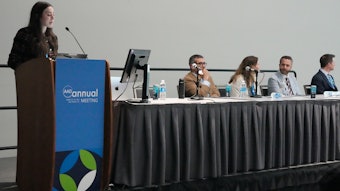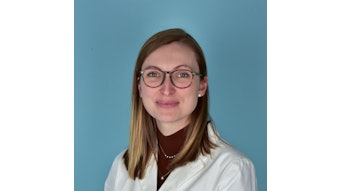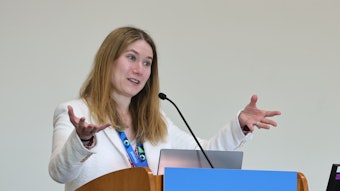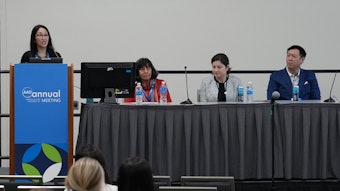Spreading the news about everyday patient cases
Panel brings scientific updates to common skin conditions.
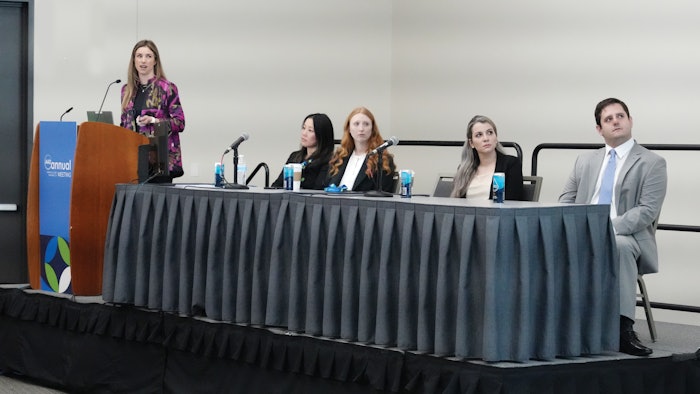
Common dermatologic conditions — the bread and butter of most dermatology practices — keep the waiting room full, but often leave dermatologists with little time to investigate “what’s new” in the management and treatment of those same conditions.
Friday’s session, U012 – Bread N’ Butter With a Side of Nutella: Short N’ Sweet, High-Yield Updates on Management of Bread N’ Butter Dermatologic Diseases, gave dermatologists the opportunity to explore just that and more. Session co-directors, Erin Wei, MD, FAAD, and Megan Arthur, MD, FAAD, both associate professors of dermatology at the University of Nebraska College of Medicine in Omaha, led the discussion on updates on management of common dermatologic conditions, including warts, itch, blistering diseases, and psoriasis as well as updates of common inpatient dermatology diagnosis. Later in the session, the full panel included a look at updates in dermatopathology in diagnosis of diseases such as melanoma. According to Dr. Wei, there’s plenty of new information to digest when treating patients with these common diseases.
“For example, it continues to be an exciting time for treatment of bullous diseases,” Dr. Wei said. “The field is moving forward at a rapid speed with a handful of new targeted treatments in the pipeline, whereas just a decade ago, there were limited options.” Specifically, Dr. Wei said more targeted treatments are on the horizon for bullous pemphigoid, including anti-IL-5, anti-eotaxin, and neonatal Fc receptor antagonists, which are all in trials. Additionally, neonatal Fc receptor antagonists and targeted cell therapies such as CAAR-T cell therapy are being investigated for treatment of pemphigus, with some early results.
Rethinking inpatient treatment
Additionally, there are many new changes in how we treat common inpatient dermatologic diagnoses including Stevens-Johnson syndrome/toxic epidermal necrolysis, acute graft-versus-host disease, incorporating anti-TNFα to the treatment scheme, and drug rash with eosinophilia and systemic symptoms (DRESS) which includes how DRESS is classified.
In some instances, such as the first-line treatment of warts, updates have not been significant, but robust efforts are underway to gather and research newer agents. According to Jennifer Adams, MD, FAAD, associate professor of dermatology, also at the University of Nebraska College of Medicine, the treatment of verruca has long focused on destructive, antimitotic, antiviral, or immunotherapeutic mechanisms.
“Recent expansion of agents in these categories has led to hope and further questions. However, there remains a deficit of larger randomized clinical trials to support newer treatments over long-practiced treatment algorithms,” Dr. Adams said. “Researchers are currently exploring data for newer application of topical agents, such as cidofovir, berdazimer sodium, or the combination of 5-flurouracil and salicylic acid as well as intralesional options like vitamin D3, cidofovir, and the HPV vaccine for warts.”
Scratching itch
According to Dr. Arthur, significant advancements have been made in expanding dermatology’s knowledge of itch. Promising new therapeutics are in development targeting multiple layers of itch pathogenesis, including biologics that target central itch signaling pathways and small molecules that modulate pro-inflammatory cytokines. Some of the exciting treatments currently being studied include:
Nemolizumab, a monoclobal anti-IL-31 receptor blocker, is the only systemic therapy in phase 3 studies for treatment of chronic prurigo. After 16 weeks, pruritus reduction greater than 4 points (PP-NRS) was achieved in 56.3% of nemolizumab treated patients.
Vixarelimab, a human monoclonal antibody that blocks oncostatin M receptor β, and therefore inhibits oncostatin M and IL-31 signaling, is currently in phase 2 studies for treatment of chronic prurigo. After 8 weeks, pruritus reduction greater than 4 points (PP-NRS) was achieved by 52.2% of vixarelimab-treated patients.
Oral JAK 1 inhibitors, abrocitinib and povorcitinib, and topical JAK inhibitor, ruxolitinib, are currently in phase 2 studies for the management of chronic prurigo.
Barzolvolimab, a tyrosine kinase KIT receptor, which leads to mast cell depletion, has shown efficacy in the management of chronic inducible urticaria and is currently in phase 1 studies for the management of chronic prurigo.
Dermatopathology embraces new technology
Panelists also discussed the newest dermatopathology technology in diagnosing and determining treatment of common skin diseases. Whole slide imaging and artificial intelligence (AI) can be effective diagnostic tools, said Corey Georgesen, MD, FAAD, assistant professor of dermatology at the University of Nebraska College of Medicine, while new immunohistochemistry aids gene fusions and point mutations.
“Whole slide imaging can aid in diagnostic methods, team communication, and medical education,” he said.
Dr. Georgesen also discussed genetic sequencing for melanocytic and soft tissue neoplasms, and DRESS for its specific histologic characteristics, including neutrophilic inflammation and interface dermatitis.
Psoriasis gets a boost
Meanwhile, it continues to be an exciting time in the field of psoriasis treatment with novel topical, oral, and injectable agents that continue to push our standards for skin clearance and expand the options available to patients, according to Sarah Lonowski, MD, MBA, FAAD, assistant professor of dermatology at the University of Nebraska College of Medicine. Dr. Lonowski discussed new advances, including the IL-17 A and F inhibitor, bimekizumab, which has been approved for plaque psoriasis, with notable features including rapidity of action and superior efficacy compared to multiple existing biologic agents. However, it increases the risk of candidiasis. Dr. Lonowski said additional efficacy, safety, and adverse event data are available for the novel, selective TYK2 inhibitor deucravacitinib, which is approved for plaque psoriasis. And two recent phase 3 randomized controlled trials demonstrated its efficacy versus apremilast and placebo.
Still another exciting new drug in psoriasis includes tapinarof, she said. It is a first-in-class topical aryl hydrocarbon receptor agonist and represents the first novel, non-steroidal topical approved for plaque psoriasis for over 25 years, though folliculitis is a notable side effect. Additionally, another exciting new treatment includes roflumilast, a selective phosphodiesterase-4 inhibitor, which was initially approved for plaque psoriasis in 2022 and has recently been approved for this indication in children ages 6 to 11. It was also recently approved as a topical foam for seborrheic dermatitis. Finally, according to Dr. Lonowski, the FDA recently approved the biosimilar ustekinumab-auub for plaque psoriasis and psoriatic arthritis in patients ages 6 and older.


